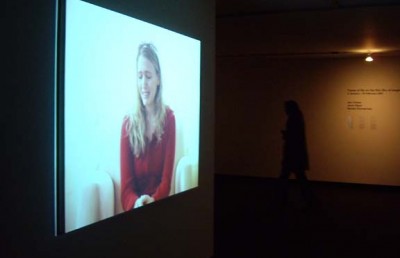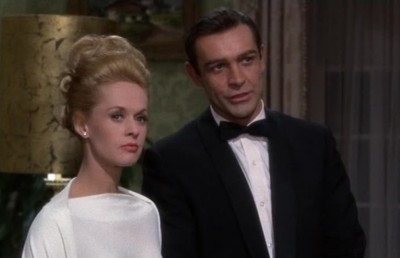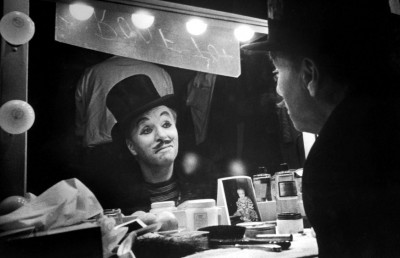Constructing the Wicker Man
A Cult Film Reviewed
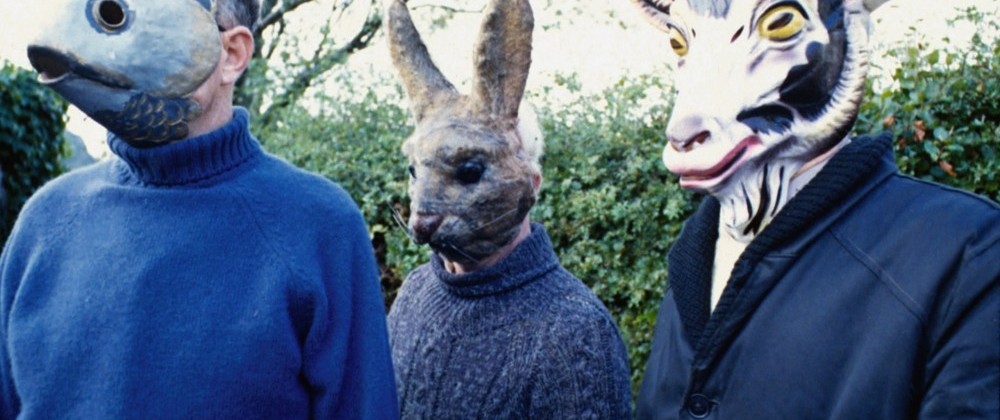
Constructing The Wicker Man: Film and Cultural Studies Perspectives
Edited by Jonathan Murray, Lesley Stevenson, Stephen Harper and Benjamin Franks
University of Glasgow, Crichton Publications, 2005
The original Scottish film The Wicker Man (1973 –the film has just been remade by Neil Labute, 2006), once referred to as the “Citizen Kane of horror movies,” tells the story of an unwed, virgin, Catholic police officer named Sergeant Howie (Edward Woodward) who travels from the mainland to a small island called Summerisle in search of a missing young woman. Once on the island Howie’s own devout religious beliefs are consistently challenged by the practising Pagans of the island, ostensibly led by Lord Summerisle (Christopher Lee). In the film’s remarkable finale Howie comes to the stark realization that he has been lured to the island by the Pagans as a sacrificial lamb for their May Day fertility rite. Howie is led in a procession to the sacrificial grounds and burned to death in a 50 foot high wicker effigy.
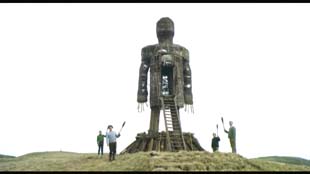
One of the reasons why The Wicker Man remains a subject of great interest 33 years after its release is because of its well-earned cult status. The study of cult film has had no shortage of coverage, beginning with Danny Peary’s three volume set of books beginning in the early 1980s, Cult Movies (The Wicker Man appears in volume 2), the two same titled books Midnight Movies by Jim Hoberman and Jonathan Rosenbaum, and Stuart Samuels, The Cult Film Experience edited by J.P. Telotte, Unruly Pleasures co-edited by Xavier Mendik and Graeme Harper, and even a recent documentary, predictably entitled Midnight Movies: From the Margins to the Mainstream, written be the author of the same titled book, Stuart Samuels (2005). Recent interest in the lower echelon and substrata of popular culture has picked up considerably since the institutionalization of Cultural Studies and Media Studies programs in Universities across Europe and North American. One such example is the recent multiple author academic study on The Wicker Man, based on a multidisciplinary academic conference on the film held at the University of Glasgow’s Crichton Campus in Dumfries in July 2003. In fact, there already was an excellent special issue of the genre magazine Cinefantastique devoted to The Wicker Man in 1977 (Vol. 6 No. 3), which covered the film’s production and post-production history very well. Now, with the addition of this recent collection, it is difficult to imagine that a fan or scholar would want to read more on the film, but at the end of the introduction by co-editors Jonathan Murray, Lesley Stevenson, Stephen Harper and Benjamin Franks, we learn that there is even a second volume of essays on The Wicker Man, based on the same conference, entitled The Quest for ‘The Wicker Man’ (Edinburgh: Luath, 2005). Scholars are never one to shut the door on a subject, hence the editors conclude with the claim that the two volumes do not represent “the final word on The Wicker Man.”
Excluding the introduction, there are eleven essays in this collection, which combine well to meet the intended interdisciplinary approach of the project. Each of the eleven essays approaches the film from a different methodological perspective or critical point of view. There are only two sets of essays which overlap in a minor way: with the analysis of religion appearing in Steven J. Sutcliffe’s “Religion in The Wicker Man: Context and Representation” and (less so) in Benjamin Franks’ “Demotic Possession: The Hierarchic and Anarchic in The Wicker Man??”; and the use of Freud’s “The Uncanny” (albeit to very different end) in Stephen Harper’s “‘The Other Copper’: Uncanniness, Identity and ??The Wicker Man Audience” and Stefan Gullatz’s “The Wicker Man, The Uncanny, and the Clash of Moral Cultures.” Two other essays do a comparative analysis of the film with another medium (the novelisation in Mark Jones’ “Now a Motion Picture? Novelisation” and puppet theatre in Melissa Smith’s “Mister Punch as Sacrificial Victim in The Wicker Man??”). A feminist analysis is used by Gail Ashurst in her essay (“‘The Game is Over’. Breaking the Spell of Summerisle: Feminist Discourse and ??The Wicker Man??”), the film’s affect on tourism is analyzed by Lesley Stevenson (“Sightseeing in Summerisle: Film Tourism and ??The Wicker Man??”), and Belle Doyle’s gender politics driven “‘Here on Official Business’: Production, Patriarchy and the Hazards of Policing a Pre-Industrial Utopia” marks a particularly useful contribution for being the only essay in the collection to contextualise ??The Wicker Man within the 1970’s horror genre (from a gender/industry standpoint). Given its status as cult film, it would have been useful if Justin Smith’s singular study of it as a cult film, “Things that Go Clunk in the Cult Film Text”: Nodes and Interstices in The Wicker Man,” would have appeared earlier in the collection, perhaps following Jonathan Murray’s opening essay, “Straw or Wicker? Traditions of Scottish Film Criticism and The Wicker Man,” which would have given immediate reason for why a whole book has been dedicated to this particular film.
Murray’s opening essay does an excellent job of setting the film up within a national film context. Murray traces the way The Wicker Man can be re-read in light of evolving critical discourses of the past thirty years in film studies of Scottish identity, ‘Scottishness’ and Scottish representation (colonialism, rural beauty/wilderness, the “Whimsy vs. the Natural,” British Modernity vs. Celtic past, etc.). One of the central critical debates that arises here and in several other essays is the possible reading of the two central characters, Lord Summerisle (Christopher Lee) and Sergeant Howie (Edward Woodward), as representational polar opposites, depending on the critical context (political, religious, ideological, etc.). For example, in Murray’s charting of Scottish film criticism, later post-1990 models would read the two characters as ideological opposites, with Summerisle a figure of anti-authoritarianism and Howie a figure of external (to the island) authority. This critical polarity takes the shape of Christianity and Paganism in Sutcliffe’s excellent analysis of religion in The Wicker Man. Director Robin Hardy and screenwriter Anthony Shaffer have both on record stated that their intention was not to make a pro-Pagan or pro-counterculture film. Their position, if any, was to be sceptical of any dogma which would place people in the “thrall of superstition” (p. 50) (nor do the director/author read the film as pro-feminist, as some have). And yet much of the film’s cult status can be attributed to an audience reading of the film as being pro-Pagan and in opposition to Sergeant Howie’s Catholic authoritarianism. According to Suttcliffe this audience sway to the side of the Pagans can be seen as a result of the post-Christian popularity in the 1960’s and 1970’s among the young of alternative forms of religion (Wicca, Druids, and Celtic), Asian-inspired cults such as the Moonies and Hara Krishnas, and the American Church of Scientology. In noting this diversity, Sutcliffe questions the simplistic binary structuralism (counterculture vs. the status quo) of those who read the film as an expression of the countercultural movement, in that it negates the great variety of alternative (countercultural) thought within this period.
Benjamin Franks steers his analysis away from religious to sociological power dynamics by employing Max Webber’s breakdown of three forms of political power: Traditional, Charismatic, and Legal-Rational. The capitalist Howie represents the Traditional form of power and Summerisle the Charismatic form of power. Franks concludes that while the film’s dynamics demonstrate that the Webberian model is problematic and inconsistent, audiences still sympathise with the Charismatic leader because of their strong antipathy to the ‘bureaucratic rationality’ represented by Howie.
Belle Doyle and Gail Ashurst cast their eyes toward gender issues and give a positive spin to the film’s treatment of women. Doyle analyzes the film’s representation of ‘patriarchy and production’ within the context of a rapid decline in British home-grown agriculture/farming and argues that the film reflects “an unusually radical politicisation of the rural economy” (79). Doyle reads the film as an acting out of the fall of patriarchal power. As Gullatz observes in his later essay, there are a plethora of natural phallic objects on the island, the meaning of which seems to pass Howie by, yet it is the women who administer the productivity, while the majority of the men remain passive, including the head patriarch, Summerisle. At the end the patriarchal figure of Howie is sacrificed as part of a Pagan fertility rite, and the implication is that Summerisle himself will be next year’s sacrifice, bringing a removal of the remaining powerful patriarchal figure. Like Doyle, who mentions the witch-hunts as an example of ‘institutionalized misogyny’ aimed by the Church at the economic and political disempowerment of financially independent women, Ashurst likens the game being played in The Wicker Man of the hunted leading the hunter with the misogynist witch-hunts of the 17th and 18th centuries. The hunter/hunted ritual is given a female/male tinge, with Howie, who feels he is the man in charge conducting a search for a missing person, in fact being led by the islanders to his sacrificial doom.
Ashurst’s essay demonstrates how The Wicker Man challenges traditional roles of women in horror films and “male-centered notions of femininity” (92). The many female-led activities –rites, dances, songs– which interrupt Howie’s investigation is read as an attack on the usual male-driven narrative. Ashurst’s essay is also the only one to discuss in-depth the famous seduction dance by the Britt Ekland character (Willow), where she dances nude along the wall separating her hotel room from Howie’s, an act which is meant to test Howie’s moral resolve and repressed sexual desires. Ashurst (rightly) argues that the scene is dramatically necessary and hence not gratuitous, and while it certainly is sexual, Ashurst believes the visual treatment of the dance allows it to be read as a challenge to the traditional ‘Mulveyan’ male gaze. For starters, there is a wall between them which thwarts Howie’s gaze; at several points during her dance Willow stares directly at the camera, which is a direct acknowledgement of the audience’s voyeuristic position (there is no one else in the room); and throughout the dance she beats her palms against the wall and window panelling, which “suggests a defiant, mocking stance toward the spectator [and Howie]” (p. 98). Ashurst concludes that the film’s treatment of women is ‘anti-mythic’ in the way it opposes many forms of patriarchal socialising agents: Christian dogma, fairy tales, and classical ‘Mulveyan’ film language (p. 103).
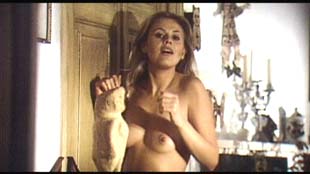
The collection concludes with two essays that use as their starting point, Freud’s seminal essay, “The Uncanny,” Stephen Harper’s “’The Other Copper’: Uncanniness, Identity and The Wicker Man Audience” and Stefan Gullatz’s “The Wicker Man, The Uncanny, and the Clash of Moral Cultures.” In Freud’s essay the uncanny represents repressed emotional and psychic anxieties and fears that are recalled to the conscious mind by objects, ideas or images that suggest the original source of anxiety in some distorted or disguised manner. (For example, in Freud’s retelling of the famous E.T.A. Hoffmann story “The Sandman,” the titular character’s pouring of sand into the eyes of sleeping children relates to the fear of castration.) According to Freud, the uncanny is the “strange made familiar,” and: “Everything is uncanny that ought to have remained hidden and secret, and yet comes to light.” The uncanny can also be something which suggests that magic, animism, and the irrational is well and truly alive, with inanimate objects being of primal importance in this regard. For example, in the same story of “The Sandman” there is a doll called Olympia that seems to come to life: hence the inanimate coming to life is a central image in the uncanny, which Freud links to childhood, when as young children we were less able to distinguish between living and lifeless objects. To Harper’s credit, what makes the uncanny apply so well to The Wicker Man is that the original object of the uncanny need not be frightening to be upsetting, but just an infantile wish, or infantile belief. Harper sees many uncanny (symbolic, inanimate) or primal objects and images in The Wicker Mann (a child’s toy clown, the huge wicker mannequin, mirrors, a dead hare, a candle fashioned out of a severed hand, womb imagery, etc.) which suggest Howie’s own unsettled feeling on the island, and foreshadows his death. Harper sees Howie’s sexual repression as a signal of his inability to see the plot unravelling before him. Harper also notes that a focus on the uncanny elements can lead to a more progressive reading of the film’s ‘counterculture’ thematic than intended by Hardy/Schaffer, which ties in to Suttcliffe’s essay and the Christianity/Paganism discourse, where the uncanny undermines Howie’s Christian rationalism and reaffirms a countercultural, ‘self-awareness/consciousness-raising’ position.
Perhaps it is fitting that Gullatz concludes the reader, because his is by far the most difficult and philosophically dense essay in the collection. Gullatz approaches the uncanny from a Lacanian position, but takes necessary digressions to the classic story “Oedipus Rex” (where Howie’s blind walk toward his fate is likened to Oedipus’ march toward his prophecy of killing his father and marrying his mother), before delving into a philosophical discussion of the Sublime and the nature of Evil (Kant, Schelling, Fichte), in an effort to contextualise and understand the final act of the Pagan islanders: the sacrificial killing of Howie. Quoting Slavo Zizek, the pre-Christian Pagan universe must be conceived as an “organic whole” and anything that maintains this balance is Good, and anything that disrupts it is Evil (a natural disaster, for example). The islander’s form of evil is ‘pathological’ rather than ‘radical,’ and distanced from the moral evil found, for example, in many Hammer horror films (Gullatz cites Terence Fisher’s The Devil Rides Out, 1968). However, Gullatz notes that seen within the context of a modern society in which the Christian conception of evil prevails, the ritualistic killing in The Wicker Man comes filtered through modern equivalents (like the “neo-Pagan barbarism of Germany’s National Socialism”). Still, Gullatz demonstrates that The Wicker Man offers a representation of Evil that is far too complex to be reduced to easy ‘demonization,’ and that its brilliance rests in being able to accurately depict this ideological and ethical tension between ancient/modern, Pagan/Christian.
The punning nuance of this collection’s title, “Constructing The Wicker Man,” is apt in the sense that many of these essays go beyond the text to ‘excavate’ meanings not easily apparent on immediate viewing of the film. However, The Wicker Man bears the weight of this sometimes dense, multidisciplinary approach because it is a clever, rich and evocative film. This is not one of those readers into which you can slip any “X” mass marketed film because the area of study is not so much the text but its consumption. My only disappointment is that there is not a single essay in the collection that applies close formal analysis to the The Wicker Man. Of course there are some essays which briefly use formal analysis to underscore a textual point (for example, Ashurst’s analysis of Willow’s dance), but none which use formal analysis as a primary method of analysis. I mention this because the film’s visual style (the natural splendor and sunny, airy atmosphere of its on location setting, the high key rather than low key lighting, the bright colors, etc.) is an important factor in making The Wicker Man a unique horror film. The omission is surprising, given how well respected formal-textual analysis is in English and British film studies. This minor caveat aside, this stands as a well-balanced collection of essays which enriches both the film and the field of film study.
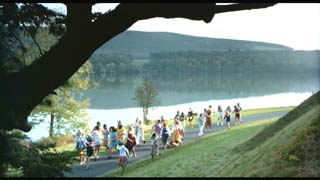
To learn more about the book or order it, click here



